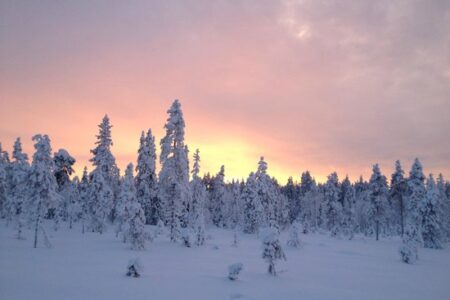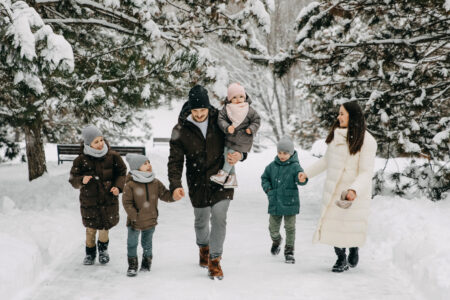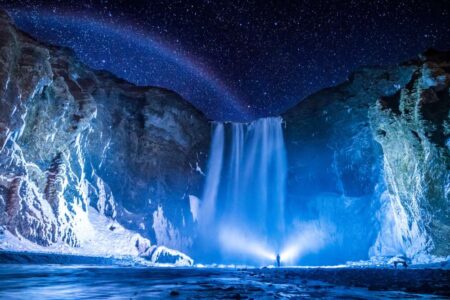The Aurora Borealis, or the Northern Lights, is a celestial spectacle that has captivated humanity for centuries. Their vibrant colours dance across the night sky, with ribbons of green, purple, and red, igniting a sense of wonder to all who get the chance to see them.
So, what is the science behind the Northern Lights?
When can you see the Northern Lights, and what triggers their display?
Let’s try to tell you about the energetic swing between the Sun and Earth’s atmosphere.
Solar Winds: The Source of the Northern Lights
The Sun’s surface is a hotbed of activity, constantly throwing out a stream of charged particles called the solar wind. This solar wind consists mainly of protons and electrons, hurtling through space at millions of miles per hour. The Earth’s magnetic field, the magnetosphere, acts as a giant shield, deflecting most of these particles.
At the poles, the magnetic field lines funnel the charged particles downwards into the upper atmosphere, like a giant cosmic funnel. Here’s where the magic happens!
Charged Particles hitting the atmosphere
As these energetic particles hit the atoms and molecules of oxygen and nitrogen in the upper atmosphere (thermosphere, at an altitude of 50-600 miles), they transfer their energy. This extra energy excites the atoms and molecules, pushing them to higher energy levels. But nature seeks balance! When these excited particles return to their original state, they release the excess energy as light, creating these mesmerising auroras.
The Colourful Spectrum of the Aurora Borealis
The colours of the Northern Lights depend on the type of gas molecule that’s been energised. Collisions with oxygen atoms primarily produce the vibrant green and red hues we often see. Nitrogen, on the other hand, contributes to the blues and purples. These specific colours depend on the energy level gained by the molecule and the way it releases that energy upon returning to its ground state.
Coronal Mass Eruptions: Supercharging the Aurora
The Sun goes through cycles of high and low activity, roughly every 11 years. During periods of high activity, the Sun can unleash powerful eruptions called coronal mass ejections (CMEs). These are giant clouds of superheated plasma containing billions of tons of material that erupt from the Sun’s corona and race outwards into the solar system.
When a CME slams into Earth’s magnetosphere, it can cause a geomagnetic storm.
This compresses the magnetosphere and channels even more charged particles towards the poles, supercharging the aurora and creating a particularly intense light show.
Predicting the Performance: The All-Important KP Index
If you’re planning a trip to witness the Northern Lights, you’ll want to be armed with the right information. The Kp-index, a geomagnetic activity scale ranging from 0 (quiet) to 9 (extreme), provides a crucial indicator of when you can see the Northern Lights. A higher Kp-index (9) suggests a greater chance of seeing the aurora borealis.
Plan your aurora chasing adventures by checking out this website: metcheck.com
Live Feeds and Aurora Forecasts
Technology offers a helping hand when predicting when to see the Northern Lights.
- NASA’s website provides a live feed of the aurora borealis, so you can check out where they may be showing with regular updates: science.nasa.gov
- KP Index when forecasting the Northern Lights: swpc.noaa.gov
Where is the best place to see the Northern Lights?
The key to finding the best place to see the Northern Lights lies in finding the right location. Auroras occur in a ring-shaped area around the Earth’s magnetic poles, aptly named the auroral oval or the zone where you would see an aurora. This zone is generally located between 60 and 72 degrees geomagnetic latitude, placing most of Scandinavia, Iceland, Alaska, northern Canada, and parts of Greenland right in the centre.
See all of our Northern Lights Holidays





